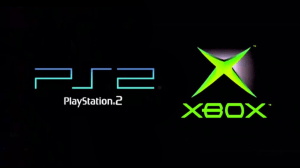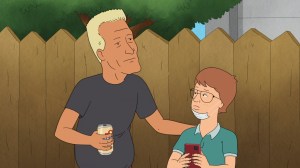
Managing a large number of players in Dungeons & Dragons can be tricky, but they also allow for the possibility of truly epic encounters, even at low levels. Most encounters in official Dungeons & Dragons material are made for a group of 4 player characters. However, many D&D groups are larger than that, which in turn require extra balancing by the DM. While it’s not too difficult to upscale an encounter for 5-6 players, things start to get unwieldy once a group reaches 7 players or more, simply because the imbalance between the number of actions taken by the players and the number of actions a monster can usually take.
Videos by ComicBook.com
Building a satisfying encounter for a party with large numbers can be tricky, but it also comes with a big payoff. Watching all of your friends pull off an epic victory is incredibly satisfying, especially when they feel that everyone contributed to bringing that win home for the team. But how do you build an encounter that can accommodate a large party? And more importantly – how do you make sure that combat doesn’t drag due to the sheer number of the players involved in combat?
Here are a few tips we’ve used to build an appropriately “epic” encounter for large parties:
Establish Clear Goals

When building any encounter, the first thing a DM should do is to establish what the goal of that encounter should be. Is it to defeat all of the enemies? Kill a boss? Accomplish some sort of task? Providing players with a clear goal is the first step to making sure that they stay focused and work together.
In a recent encounter I built for 10 players, I provided players with a relatively simple task: they needed to locate a secret tunnel hidden in one of five buildings, and then they needed to destroy the tunnel with explosives given to the party. Because the goals weren’t directly tied to combat, the players needed to focus more on moving around the battlefield than killing every creature they found. Some players focused on crowd control, others went door to door looking for the tunnel, and others provided protection for the players actually carrying the limited explosives.
The larger a group is, the simpler a task should be. While a large group of players means that they can take a larger number of actions per round, you also need to keep in mind that each player will likely only have a few turns to actually accomplish their goals. A larger group does not necessarily mean that they can complete more complex quests – it simply means that each player has only a handful of actions to actually achieve what they want to do.
Provide Secondary Objectives

If your group is particularly large, you may also want to provide secondary objectives to make sure that all of the players stay occupied. After all, if a player finds that the main objective is well in hand, they might lose motivation and focus. In the example above, I provided players with the secondary goal of killing three lieutenants lurking in the area. This provided the players who weren’t actively trying to blow up the tunnels with something to keep them occupied and built a sense that they were contributing to the encounter.
Put External Pressures on the Party

Another trick to keeping the players focused and moving quickly is to provide the players with a hard time limit. While you want to give the players ample time, you also need to remember that players tend to lose focus as an encounter stretches out over an extended period of time. Giving the players a running clock also pushes players to make quick decisions in a hurry instead of focusing on trying to make the “right” decision every turn.
If you don’t want to place the players with a hard time limit, you may want to find other ways to keep pressure on the party. Setting the encounter in a room that’s slowly filling with water or adding more enemies after every turn should keep the players from thinking that they can hang back and slowly pick their way through an encounter at their leisure.
Simplify

One key to being an effective DM is learning how to simplify running the game while keeping the experience enjoyable for both yourself and your party members. This is especially important when running an encounter that features a lot of moving parts. Good preparation usually takes care of some of this – having “cheat sheets” listing ACs for party members and enemies will save time and energy, as will using fixed damage instead of rolling for damage every time a hostile creature hurts a PC.
You’ll also find that encounters go easier if you have only 1 or 2 types of enemies on an encounter map. It might be more interesting for a horde of enemies to have lots of different statblocks, but you’ll have more time to strategize if the bulk of your forces are all made up of the same kinds of creatures. After all, a DM can always provide extra flavor to the enemies using descriptions rather than trying to sort through tons of different stat blocks.
You may also want to consider some “unofficial” rules, such as treating some enemies as minions with only 1 HP. While this is a holdover from earlier versions of D&D, it’s still a handy tool for DMs who want to have lots of monsters for their players to kill.
Ask for Help

One mistake that a lot of DMs make is thinking that they’re the only person at the table who can “run” the game. Having the players manage things like Initiative orders or keeping track of HP and damage will give you less work to focus on, which means that you can build a more enjoyable experience for your players. Most players will be happy to help, and this also gives them something to do in between turns and keeps them focused on the game itself.
Conclusion
Trying to run a D&D game with a large number of players is definitely more work, but it’s not an impossible task. The core focus of D&D – focusing on storytelling and having a good time – remains the same no matter how many players are at the table. As a DM, your first goal should be crafting an enjoyable experience for your players. If your players leave the table happy, than you should feel like you did a good job.









